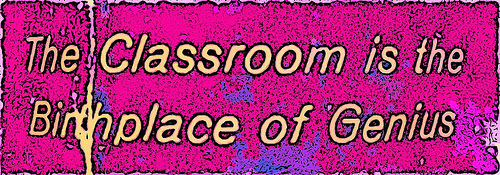One way to implement inquiry driven work is to let the students drive the inquiry. You heard about voice and choice when you had your PBL training. Genius Hour is a great way to let the students have voice AND choice on projects of their own interests.
Chris Kesler, an educator from outside of Houston, defines Genius Hour as:
… a movement that allows students to explore their own passions and encourages creativity in the classroom. It provides students a choice in what they learn during a set period of time during school.
Chris’s Genius Hour blog gives you direction and answers your questions such as:
Approaching Your Administration About Genius Hour
Genius Hour Project Introductions
Setting Genius Hour Expectations
The Google tools you and your students have access to make this such an easy program to implement and document the progress. Use Google Docs for notes (with you facilitating in the Comments section), Sheets or Docs for data collection, Draw for prototypes, Presentation or YouTube for publication of their work to their blogs, Hangouts for working with experts, and the list goes on. The best thing is that you don’t have to be an expert on any of it. You’re just the guiding, inspiring force behind their work.
Still have questions about Genius Hour? Check out Chris’s explanation in this video below.
Still not convinced? Watch some interviews of teachers implementing the program or check out some of the dozens of teacher blogs and Twitter accounts of those using Genius Hour to teach their kids. Or, if you prefer paper, grab a copy of the book “Inquiry and Innovation in the Classroom: Using 20% Time, Genius Hour, and PBL to Drive Student Success.”
Maybe you’re still reading and the thought running through your head is, “This is fine and all, but how do I make them include the subject I teach in their work?” Well, that’s not always the point of it. If you want to make the Genius Hour by modifying Google’s ideology (the time can be used provided it has the potential to advance the company) to fit your class, then set those goals from the onset. But be willing to be flexible in the content the students select. By giving them freedom, even if the topic is a stretch, they gain trust in you because you are trusting them to make the learning meaningful. They will see you buying into them and their learning/needs, and they will buy into you as someone who cares about what they think. In the end, that might be the biggest payoff from the entire process. And to me, that’s money in the bank.
Oh, and if you think this is just some new fad that’s going to come and go, you’re wrong. WOISD has had employees doing this since before there was a Google doing 20% time. Peggy Raines and Linda McKinney were doing this when I would substitute in their classrooms back in the early 90’s. They called it P.R.O.B.E.: Personal Research On Basically Everything. It was stellar.

